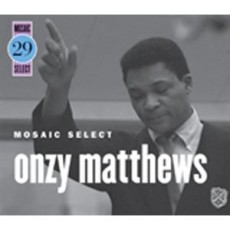
Daily Dose Of Jazz…
Onzy Matthews was born in Fort Worth, Texas on January 15, 1936, grew up in Dallas until he was 14, when his mother pulled up stakes and moved to Los Angeles for a better job. He graduated from high school at 16 and had already decided he wanted to sing. Nearly every day he walked to a nearby park, where he could play piano for hours in the recreation building.
Augmenting his early gospel roots with healthy doses of smooth California jazz and big band music, Matthews taught himself to accompany his singing on piano until he realized he needed arrangements.
He attended Westlake College of Music, studied ear training and harmony, started singing with a dance band and learning about arranging. After several years of performing, attending concerts and asking questions he had 21 original songs arranged for big band.
His musical career sprang from eight bars of music. As an aspiring singer, pianist and composer in 1963, a young Mr. Matthews gave his first professional arrangement to Les Brown for a tryout with the Band of Renown. Out of the arrangement came 8 bars that sounded good to Onzy and Les Brown advised him to take those 8 bars and start from there. Doing so he went on to become one of the most sought-after arrangers in jazz and pop music. It was later through Dexter Gordon that these first twenty-one were played by the best musicians in Hollywood that turned into a regular Wednesday night jam session. The word spread and he started getting courted by record labels to work with their artists.
Onzy’s first major arranging job was on Lou Rawls’ album Black & Blue, followed by his debut as a leader in 1964 on “Blues With A Touch Of Elegance” for Capitol. About a year later, with his career in full swing, he held a guest spot on a New York radio show hosted by mercer Ellington who introduced him to his dad, friendship was struck and four years later became collaborators, filling the void from Billy Strayhorn’s death.
Matthews tailors the arrangements according to the empathy of the artist by listening to the artist and arranging to bring out things in them they weren’t aware of. This was his magic. After Ellington death in ’74, he moved to Seattle, formed a big band for three years moved between Texas and New York and finally moved to Paris in ’79, put together another big band, played with Miles Davis and finally moved back to Dallas in 1994.
Onzy D. Matthews, whose 35-year career had him working with some of jazz’s most notables, was discovered in his Dallas apartment passed away at his typewriter by jazz singer Jeanette Brantley and her husband Hans Wango on November 15, 1997. He was 67.
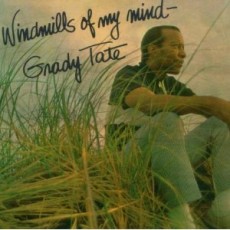
Daily Dose Of Jazz…
Grady Tate was born January 14, 1932 in Durham, North Carolina who began singing at age four, drums at five. However music was not in his immediate future as he earned a degree from North Carolina Central University with a degree in English literature/drama, a minor in psychology and taught English and speech in Washington, DC. Fortunately for the jazz world his desire to pursue an acting career lead him to New York City and the American Academy of Dramatic Arts and once in New York his reputation as an outstanding musician resulted in work with Quincy Jones.
Grady Tate’s drumming helped to define a particular hard bop, soul jazz and organ trio sound during the mid 1960’s and beyond. His slick, layered and intense sound is instantly recognizable for its understated style in which he integrates his trademark subtle nuances with sharp, crisp “on top of the beat” timing (in comparison to playing slightly before, or slightly after the beat). The Grady Tate sound can be heard prominently on the many classic Jimmy Smith and Wes Montgomery albums recorded on the Verve label in the 1960s.
He has been a member of the New York Jazz Quartet, the Tonight Show with Johnny Carson for six years, and his most widely heard vocal performances are the songs “I Got Six”, “Naughty Number Nine”, and “Fireworks” from Multiplication Rock and America Rock part of the Schoolhouse Rock series.
Grady Tate’s popularity as choice sideman of accomplished musicians is due to his remarkable intuitiveness and ability to make any style of music swing tastefully, and his interpretation of many different genres of music, in which he creates his own unique style of jazz led him to work with a host of talent, the short list including Lionel Hampton, Sarah Vaughan, Jimmy Smith, Grant Green, Stanley Turrentine, Lena Horne, Astrud Gilberto, Ella Fitzgerald, Cal Tjader, Bill Evans and Stan Getz.
Grady Tate, baritone vocalist and drummer has been on the faculty of Howard University since 1989.
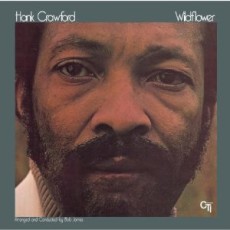
Daily Dose Of Jazz…
Hank Crawford was born Bennie Ross Crawford, Jr. on December 21, 1934 in Memphis, Tennessee. He began formal piano studies at age nine and was soon playing for his church choir. His father had brought an alto saxophone home from the service and when Crawford entered Manassas High School, he took it up in order to join the band, hanging out with George Coleman, Booker Little, Harold Mabern and Frank Strozier. At eighteen he appeared on an early 1952 Memphis recording for B. B. King playing alongside Ben Branch and Ike Turner.
In 1958 Crawford attended Tennessee State University, majored in music studying theory and composition, played alto and baritone saxophone in the Tennessee State Jazz Collegians and led his own rock ‘n’ roll quartet, “Little Hank and the Rhythm Kings”. It was during this period that he met Ray Charles and got his nickname “Hank” because he looked and sounded like local legendary saxophonist Hank O’Day.
Charles hired Crawford originally as a baritone saxophonist but he switched to alto in ’59 and became musical director until ’63 when he left to form his own septet, having already established himself with several albums on Atlantic Records, recording a dozen albums between 1960 and 1970. He also arranged for Etta James, Lou Rawls and others, although much of his career has been in R&B. However, in the Seventies, Hank had several successes on the jazz and pop charts.
In 1983 a move to Milestone Records gave him the opportunity to become a premier arranger, soloist, and composer, writing for small bands—that include guitarist Melvin Sparks, Dr. John and organist Jimmy McGriff, the later with whom he toured extensively and co-led dates for Milestone’s “Soul Survivor”, Steppin’ Up”, “On The Blue Side” and Road Tested”. The new century found Crawford pursuing a more mainstream jazz sound with the “World of Hank Crawford”, covering Ellington and Tadd Dameron compositions.
Hank Crawford, alto and baritone saxophonist in the hard bop, R&B, jazz-funk and soul jazz genres, credits Charlie Parker, Louis Jordan, Earl Bostic and Johnny Hodges as early influences. His piercing full-bodied signature sanctified church sound, easily recognizable, will live on through his music since his passing on January 29, 2009 at 74.
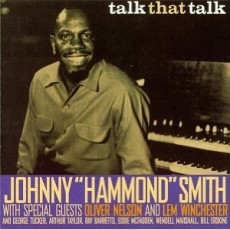
Daily Dose Of Jazz…
Johnny “Hammond” Smith was born John Robert Smith on December 16, 1933 in Louisville, Kentucky and earned the nickname “Hammond” for his renowned playing on the B3. In the early years of his career he played with Paul Williams and Chris Columbo before forming his own group. His bands featured singers Etta Jones, Byrdie Green, saxophonists Houston Person, Earl Edwards, guitarists Eddie McFadden, Floyd Smith, James Clark and vibist Freddie McCoy. However, his career took off as he was serving as accompanist to singer Nancy Wilson.
After a string of albums over a 10-year period at Prestige Records during the 60s, Johnny signed with CTI’s Kudu label, launching it with his soul/R&B project “Break Out” that featured Grover Washington Jr. as a sideman prior to the launch of his career as a solo recording artist. Three further albums followed and he became “Johnny Hammond”, dropping “Smith” from his name.
Adapting to the changing sound of the music Johnny’s style had become increasingly funky. This culminated in two popular albums with the Mizell Brothers, “Gambler’s Life” (1974) for the CTI offshoot, Salvation and then in 1975, “Gears” after switching to another jazz label, Milestone Records, incorporating electric and acoustic pianos as well.
As an educator he taught at Cal Poly Pomona music department for several years, penned “Quiet Fire” for Nancy Wilson’s 1989 “Nancy Now” album and remained a hard bop and soul jazz organist until his passing on June 10, 2004.
More Posts: organ
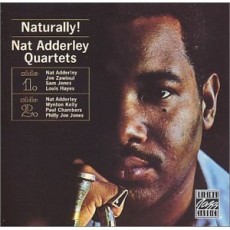
Daily Dose Of Jazz…
Nathaniel Adderley was born on November 25, 1931 in Tampa, Florida but grew up in Tallahassee when both his parents were hired to teach at Florida A&M University. While living in Tallahassee in the early 40s, he and his brother Julian played with Ray Charles, in the ‘50s he worked with his brother’s original group, and with Lionel Hampton and J. J. Johnson.
In 1959 joined his brother’s new quintet and stayed with it until Cannonball’s death in 1975. It was during this tenure that Nat composed “Work Song,” “Jive Samba,” and “The Old Country” for this group that have since become jazz standards.
After his brother’s death he led his own groups and recorded extensively working with Ron Carter, Sonny fortune, Johnny Griffin, Antonio Hart and Vincent Herring, among others. Adderley moved to Harlem in the 1960s, Teaneck, New Jersey in the 1970s, before moving to Lakeland, Florida where he was instrumental in the founding and development of the annual Child of the Sun Jazz Festival, held annually at Florida Southern College.
Nat Adderley, cornetists and trumpeter in the hard bop and soul jazz genres, lived with diabetes throughout his career, an illness that resulted in his death from complications on January 2, 2000. He left the jazz world a body of work that has been memorialized by a host of jazz musicians.

